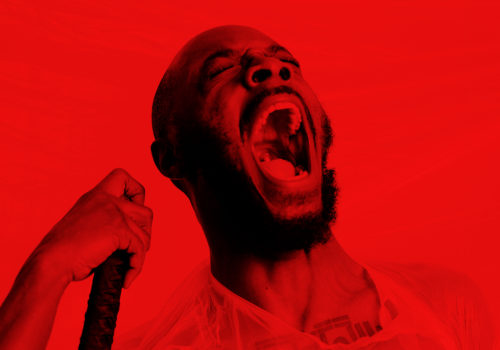How Irish artists are changing the future of music streaming
Words: Ellen McVeigh
Artwork: Paul Smith
While Joe Rogan’s platforming of anti-vax guests and Neil Young’s subsequent departure has made the headlines, for artists, it’s just another in a long line of black marks for a company that has undervalued them for years. With conversations around ethical music consumption at an all time high, Ellen McVeigh speaks to Irish artists and new streaming platform minm about imagining a fairer future outside the grips of the streaming giant.
This week, the music streaming giant Spotify was given an ultimatum by Neil Young; either remove the Joe Rogan Experience from their platform, or Young would remove his music. The singer-songwriter was protesting Covid-19 misinformation on Joe Rogan’s podcast, peddled both by the host himself and by various guests. Most recently, an interview on the podcast with Dr Robert Malone, a virologist who has been removed from Twitter for promoting Covid-19 misinformation, prompted 270 medical professionals to pen an open letter to Spotify which asked for the platform to “immediately establish a clear and public policy to moderate misinformation on its platform.”
On 30 January 2022, Spotify announced they were working to add a content advisory to any podcast episode that includes discussions around Covid-19. Despite outlining a commitment to “learning, growing and evolving,” many artists and listeners saw Spotify’s continued support for Joe Rogan, with whom they signed a $100 million deal in 2020, as a clear sign of where their priorities lie.
Young requested that his music be taken down from Spotify once it became clear that they would not remove the Joe Rogan Experience. He has since been followed off the platform, not only by compatriots such as Joni Mitchell and Crosby, Stills and Nash; but by artists around the world for whom this was another in a long line of issues with the streaming service. For many people, the story of Spotify has long been one of artist exploitation, shady investments and baffling priorities.
“You pay a distributor a flat rate to place your music on a streaming site like Spotify, and in return you might make enough money in two to three years time to buy a coffee for you and a friend.”
MESSYNG
For Kerry artists, MESSYNG, the recent Joe Rogan controversy brought back into focus problems they had had with Spotify for a while. Namely, how little artists are paid by the streaming service worth more than $50 billion. “Personally, I was never happy with having music on there as it felt like a “pay to play” system,” they said, “you pay a distributor a flat rate to place your music on a streaming site like Spotify, and in return you might make enough money in two to three years time to buy a coffee for you and a friend.” The group tweeted on January 28th that they were removing their music from Spotify, citing “defence company investments” as their reasoning, and encouraging other artists to do the same. “We’d probably not have even flagged that we were taking the music down if it weren’t for the chance to get others to do the same, so we’d like to do just that and state this as a call to arms for other Irish acts to consider dropping Spotify altogether,” they explained.
The ‘defence company investments’ referred to Spotify’s second most recent controversy, just one month before the problematic Joe Rogan Experience episode came out. In November 2021, Spotify CEO Daniel Ek reportedly invested more than €100 million into European security startup Helsing, who use artificial intelligence to support soldiers on the battlefield. This news sparked several artists and listeners to announce that they were boycotting the platform, cancelling subscriptions and moving music onto other platforms such as Bandcamp. For many artists, it is particularly galling to see huge investment in military software and controversial creators such as Joe Rogan, when the majority of artists see little to none of these streaming profits.
It has been an open secret for years that streaming music on Spotify pays artists very little. The bottom 99 per cent of artists on Spotify earn an average of $26 (€23) a year from royalties, while the top one per cent can earn regular six figure payouts. According to Business Insider, Spotify pays out between $0.003 and $0.005 per stream, with the rights holder (often the record label) taking the largest share of the payment. In Spotify’s model, it is the record label rather than the artists who benefit the most. Unsurprisingly, major record labels such as Sony and Universal still own a sizeable amount of stocks in Spotify.
Not only do the artists get paid a pittance by Spotify, but the modern culture of streaming on these huge platforms has changed the way music consumers part with their money in other ways. “In the past, a million streams meant you had a decent following,” says FIFA Records’ Eddie Kiely, “But now you could get a million streams and go to a gig and there’ll be 10 people there – it’s not worth the same.” The ease and passivity of streaming songs on Spotify or adding music to playlists has led artists to focus on accumulating streams and listens which don’t always translate into actual income.
Particularly during the pandemic, when revenue from physical record sales and touring were decimated, artists could not live off streaming figures alone. “If you have a million followers on bandcamp, the likelihood is that a fair chunk of them will be willing to buy your music,” says Kiely, “On Spotify a lot of your listens could come from just getting added to people’s gym playlists.”
An Irish startup is hoping to challenge this attitude, and bring some transparency and community back into the streaming market. In 2021, Luke Lau and Daniel Cosgrove set up the streaming platform minm, aiming to provide independent music acts and their fans with a streaming platform that pays fairly. “It started with how gobsmacked we were at the start of the pandemic when we saw all these musicians tweeting their GoFundMe’s,” says Lau, “It became evident that once you take gigs out of the equation there’s really no money whatsoever.”
When touring was no longer a possibility, and record shops were closed, independent Irish artists had to rely on websites such as Bandcamp to stay afloat. While the financial losses to the industry during the pandemic encouraged music fans to support their favourite independent artists through initiatives like Bandcamp Friday, the ease and accessibility of streaming is difficult to shake. “People don’t buy music or movies anymore, they just want to pay a monthly fee and have everything,” says Belfast-based artist Arvo Party, the first act to upload his music to minm. “The option to buy is still there, but people aren’t interested so to not upload your music to streaming platforms is like not releasing at all to lots of people.”
As well as being shocked by how little money independent artists make from Spotify, Lau and Cosgrove were also surprised by the platform’s ‘market centric’ payment model. In the large streaming platforms; Spotify, Apple Music, Amazon, the subscriptions of every user in a country are pooled together and divided by the total number of streams in that country to find the price per stream. In this model, artists with billions of streams get the majority share, and each user’s money mostly goes to these artists, whether they have listened to them or not. While this works for a handful of artists, for independent artists who make up the majority, the system is broken. “It’s not that these huge artists don’t deserve it, or that there are other people who deserve it more,” says Lau, “The problem is more that streaming is so fundamentally undervalued that there is simply not enough money to go round.”

Minm believes their ‘user centric’ model could be a solution to this problem. A subscription on minm goes “directly to the artists you’ve listened to, in proportion to the number of times you streamed them that month.” Their hope is that this model will provide a fairer and more transparent alternative to streaming for independent artists and their supporters. “We don’t really see ourselves as a competitor to Spotify,” says Cosgrove, “More as a complement for the other side of the music industry.” For artists and record labels who have moved their music on to minm, it is this value system that attracted them. “In the olden days, if you heard of a band you would go out and buy albums or gig tickets, but there’s no investment like that on big streaming platforms,” says Eddie Kiely, “I think with minm there is a kind of investment, both with money and with time, you’re actively going to a particular type of platform.”
FIFA Records are one independent Irish record label that has encouraged their artists to shift their focus from Spotify, in an attempt to change the landscape of the independent streaming market. Recent releases from artists on the label have been initially released exclusively on minm and Bandcamp. “They can release on Spotify later if they want to,” explains Kiely, “but I want to give the real supporters the first chance to listen.”
“We don’t really see ourselves as competing against anyone, the whole point of this is to grow the independent music streaming economy.”
minm
Having done little marketing other than a couple of Tweets, the platform has been reliant on word of mouth support from labels and artists who have taken the plunge and uploaded their tracks to the site, which is still in its very early stages. “We’re doing the technical side but the real bridge to cross is convincing people to pay for independent music,” says Lau, “that part has really been down to the artists.”
It’s a testament to the hunger in the independent music scene for an alternative streaming platform, that a site which does not even have a mobile app yet has almost 2000 tracks uploaded. But the creators of minm do not plan to overtake the bigger platforms. “We actually encourage artists to put links to their Bandcamp on their [minm] page,” says Lau, “We don’t really see ourselves as competing against anyone, the whole point of this is to grow the independent music streaming economy.”
Many music fans were encouraged by Neil Young’s highly publicised departure from Spotify and the conversations it sparked around the ethics of streaming platforms. This was marred by Young promptly encouraging his supporters to stream his music on Amazon Music, a site which itself has faced controversy because of its investment practises. In the immediate wake of Young’s exit from Spotify, the streaming platform’s stock dropped 12 points, but has since rebounded. “If a small artist takes their songs off Spotify that doesn’t really make a dent in Spotify’s finances,” explains Lau, “it’s actually listeners making the change in their buying habits that could create a change.”
For independent artists, the question isn’t simply about encouraging people to choose a platform other than Spotify, it is about rethinking the way we have come to value music and how we can build an alternative to streaming that is fair and sustainable. Lau and Cosgrove are confident that there is the possibility for change: “People demonstrate their commitment to environmental activism by changing their consumption habits – not eating meat, not travelling by plane – will the same thing happen with music eventually?” Lau asks, “will people say, ‘I want to stream my music sustainably?’ I’d like to think this is going to happen soon.”

